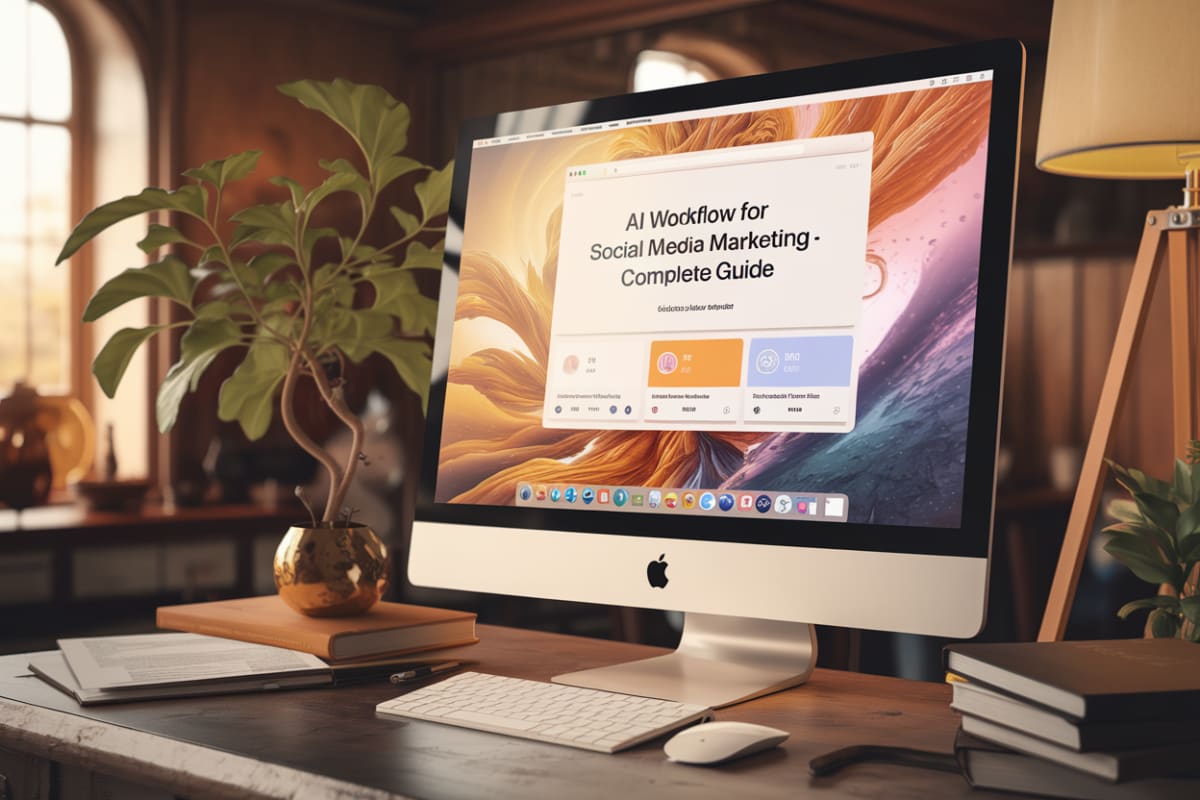Micro Influencers: Complete Guide
What are micro influencers?
Definition of Micro-Influencers
Micro-influencers are content creators with smaller followings compared to macro or mega influencers, typically ranging from 1,000 to 100,000 followers. Despite their audience size, they maintain highly engaged and niche-specific communities. This engagement leads to higher trust and more impactful recommendations, making them valuable assets for brands aiming to connect authentically with specific demographics.
Impact and Benefits
Micro-influencers gain effectiveness through perceived authenticity. For instance, a beauty influencer with 37,000 followers can significantly impact purchasing decisions compared to a celebrity with millions of followers. Followers often trust their recommendations, believing they provide genuine insights rather than commercial endorsements. Lauren Mae, a beauty influencer with 37K Instagram followers, exemplifies this; her audience actively engages with her content, enhancing her influence in the beauty community Buffer.
Case Studies
- Cohesive Collaborations: Brands like All Saints successfully partner with micro-influencers such as Lois Sterling to create content around outfit inspiration. This strategy leverages the authenticity and relatability of micro-influencers to better engage potential customers.
- Higher Conversion Rates: Studies show that campaigns involving micro-influencers often yield better conversion rates. Reports indicate that 64% of consumers have made a purchase based on an influencer's recommendation Buffer.
How do micro influencers work?
Definition of Micro-Influencers
Micro-influencers are social media users with follower counts typically ranging from 10,000 to 100,000. They are recognized for high engagement rates and personal connections with their audiences, making them effective for marketing campaigns focused on authenticity and niche targeting.
Engagement and Authenticity
Micro-influencers often cultivate loyal and engaged followings. Brands leverage this for authentic recommendations. Lauren Mae, a beauty micro-influencer with about 37,000 followers, has built trust with her audience, leading to higher conversion rates than larger influencers who may not connect personally with their followers Source: Buffer.
Cost-Effectiveness
Brands benefit from working with micro-influencers as they typically charge less than macro-influencers or celebrities. A significant percentage of brands allocate 10% to 20% of their marketing budgets to influencer marketing, highlighting the cost-effectiveness of collaborating with micro-influencers Source: HubSpot.
Case Studies
- All Saints and Lois Sterling: The fashion brand collaborated with influencer Lois Sterling, who shares outfit inspirations, effectively reaching an engaged audience that aligns with the brand's image.
- Hype Maven Agency: They emphasize building genuine partnerships with micro-influencers to create authentic content that resonates with target audiences, demonstrating the effectiveness of such collaborations Source: Buffer.
Challenges Faced
Despite their advantages, micro-influencers face challenges such as increased competition and shifts in algorithms that can hinder visibility and engagement. The influencer economy is growing, but many micro-influencers feel pressure from larger creators and changing market dynamics Source: Business Insider.
What are the benefits of using micro influencers?
Benefits of Micro Influencers
Higher Engagement Rates
Micro-influencers, typically defined as individuals with 10,000 to 100,000 followers, often achieve higher engagement rates compared to macro counterparts. A study by Aspire found that 63% of marketers believe that influencer-generated content outperforms brand-directed content. This suggests that audiences interact more with content from relatable and trustworthy influencers.
Authenticity and Trust
Micro-influencers often appear more authentic and relatable than larger influencers. Amanjit Heer, founder of We Heer You, notes that consumers increasingly trust recommendations from influencers with whom they feel a personal connection over traditional advertising. This authenticity can enhance consumer trust in brands. Lauren Mae, a beauty micro-influencer with 37K followers, has built a loyal audience that values her recommendations, demonstrating that smaller influencers can significantly impact purchase decisions.
Cost-Effectiveness
Brands benefit from the cost-effectiveness of partnering with micro-influencers. Celebrity endorsements command high fees, while micro-influencers charge less, allowing brands to engage multiple influencers within a budget. Nearly 50% of brands spend less than $10K on influencer marketing, indicating that micro-influencers are accessible to businesses of all sizes.
Niche Targeting
Micro-influencers cater to specific niches, allowing brands to target campaigns more effectively. This targeted approach often leads to higher conversion rates, especially in B2B contexts where audiences engage with niche content. B2B companies note that micro-influencers better align with their audience’s interests, making recommendations more relevant and impactful.
Enhanced Brand Awareness
Collaborating with micro-influencers can significantly boost brand awareness, especially in niche markets. An effective influencer campaign exposes brands to new audiences who trust the influencer's opinion, leading to increased visibility and potential customer acquisition. For instance, a hotel partnering with travel micro-influencers can showcase unique offerings to a targeted audience interested in travel experiences.
Real-World Examples
- Sun Peaks Resort collaborated with travel photographer Callum Snape. His engaging content generated significant attention and engagement, far outpacing traditional marketing efforts.
- Giraffe Manor utilized luxury travel micro-influencers to promote their “Sponsor a Giraffe” initiative, effectively reaching an audience passionate about wildlife conservation.
Micro-influencers also help brands streamline their interactions. With the AI Social Media Coordinator from Enrich Labs, brands can automate comment moderation and analysis across platforms, focusing on higher-impact work that drives growth. This solution enhances engagement and provides unique customer insights.
How to find micro influencers for your brand?
Understanding Micro Influencers
Micro-influencers typically have follower counts between 10,000 and 100,000. They often focus on niches and maintain higher engagement rates than larger influencers, making them particularly effective for targeted campaigns.
Researching Relevant Platforms
To find micro-influencers, start by identifying social media platforms where your target audience is most active. TikTok, Instagram, and YouTube are popular for influencer marketing. High Social offers a service that helps brands grow their TikTok presence by connecting them with relevant influencers based on audience demographics and interests High Social.
Utilizing Influencer Marketing Platforms
Consider using influencer marketing platforms such as Modash or Aspire. These platforms allow you to filter influencers based on metrics like engagement rate, follower count, and audience demographics. This helps identify micro-influencers who align with your brand values. Buffer suggests focusing on influencers with genuine connections to their audience rather than just large followings Buffer.
For a more streamlined approach, brands can utilize Enrich Labs' AI Social Media Coordinator. This tool not only identifies micro-influencers but also autonomously moderates and analyzes social interactions, saving time and providing actionable insights.
Social Media Listening and Hashtags
Use social media listening tools to identify conversations around your brand or industry. Look for trending hashtags related to your niche, which can lead you to micro-influencers actively engaging in those discussions. For example, if you're in the beauty industry, searching hashtags like #skincare or #beautytips can reveal influencers who fit your brand's ethos.
Engaging with Potential Influencers
Once you have a list of potential micro-influencers, engage with their content by liking, commenting, and sharing. This builds a relationship before reaching out for collaboration. When contacting them, be specific about what you admire about their work and how they align with your brand.
Case Studies and Examples
Brands like All Saints have successfully collaborated with micro-influencers to promote their fashion items. They partnered with Lois Sterling, a micro-influencer who specializes in outfit inspiration, demonstrating how brands can leverage micro-influencers to create authentic content and effectively reach targeted audiences Buffer.
What is the difference between micro influencers and macro influencers?
Definitions
- Micro-Influencers: Individuals with follower counts ranging from 1,000 to 100,000. They often cater to specific niches and are perceived as relatable and trustworthy by their audience.
- Macro-Influencers: These influencers have follower counts exceeding 100,000, often including celebrities or public figures. They provide broader audience reach but may have lower engagement rates compared to micro-influencers.
Engagement and Trust
Micro-influencers typically foster higher engagement rates due to closer, more personal relationships with their followers. A beauty micro-influencer might have a follower base that regularly interacts with their content, leading to trust and higher conversion rates for product recommendations. In contrast, macro-influencers may reach a larger audience but often see lower engagement rates as their followers may not feel as connected.
Cost and ROI
- Micro-Influencers: Generally more cost-effective. Brands can collaborate with multiple micro-influencers for the same budget as one macro-influencer, maximizing reach and engagement. Their campaigns often yield better ROI when targeting niche markets. A niche skincare brand might partner with several micro-influencers within the beauty community to increase authenticity and trust, leading to higher sales conversions.
- Macro-Influencers: Higher costs associated with collaborations, but they can provide massive visibility quickly, making them suitable for brands looking for significant impact fast. Luxury brands often use macro-influencers for broad awareness campaigns, leveraging their celebrity status to enhance brand prestige.
Ideal Usage Scenarios
- Micro-Influencers: Best for brands focusing on engagement, authenticity, and niche markets. They suit long-term campaigns aimed at building loyalty.
- Macro-Influencers: More suited for brands prioritizing immediate visibility and broad awareness. They effectively launch new products or services on a large scale.
How much do micro influencers charge?
Micro-Influencer Pricing Overview
Micro-influencers, defined as those with follower counts between 10,000 and 50,000, charge varying amounts based on several factors such as engagement rates, niche, platform, and specific requirements of the brand campaign.
Average Earnings
- Instagram: Micro-influencers generally earn between $100 to $500 per post, depending on follower count and engagement rate. Influencers with around 10,000 followers can expect about $200 per post, while those with closer to 50,000 followers can charge up to $500 per post Source Name.
- TikTok: Rates for micro-influencers on TikTok are generally lower, ranging from $25 to $125 per post Source Name.
Factors Influencing Pricing
- Engagement Rate: Micro-influencers with higher engagement rates command higher fees. Brands prioritize engagement because it often leads to better conversion rates.
- Content Type: Different types of content (e.g., Instagram reels, stories, static posts) have different rates. Multi-part campaigns (like reels and stories) typically cost more than a single post.
- Niche: Influencers in lucrative niches (like beauty or tech) may charge more due to higher demand and potential ROI for brands.
- Brand Relationships: Established relationships between influencers and brands can lead to negotiated rates that deviate from standard pricing.
Case Studies
- Kary Santayana (14,400 followers) charged $1,200 for one Instagram reel and one story, demonstrating the potential for higher fees based on niche and engagement Source Name.
- Mackenzie Edwards (30,000 followers) received $4,000 plus a project stipend for two TikTok videos, showcasing how campaign complexity can affect pricing Source Name.
Overall, while micro-influencers provide a cost-effective way for brands to reach targeted audiences, the exact rates they charge can vary significantly based on the above factors.
What industries benefit most from micro influencers?
Industries That Benefit Most from Micro-Influencers
Micro-influencers are particularly advantageous for several industries due to their authenticity, engagement, and connection with niche audiences. Key industries that benefit from collaborations with micro-influencers include:
1. Beauty Industry
Micro-influencers in the beauty sector often understand products and trends, making them effective in promoting brands. Beauty influencers like Lauren Mae, with around 37K followers, connect with their audience by sharing honest reviews and tutorials, showcasing how micro-influencers provide authentic recommendations that resonate with followers Source: Buffer.
2. Fashion
The fashion industry thrives on visual appeal, and micro-influencers cultivate strong relationships with their followers. Brands like All Saints collaborate with fashion influencers who create content around outfit inspirations, demonstrating the effectiveness of micro-influencers in driving sales and brand awareness through authentic storytelling Source: Buffer.
3. Food and Beverage
Micro-influencers in the food industry share cooking tips and restaurant reviews, effectively reaching targeted audiences. Food bloggers with smaller followings tend to have higher engagement rates, as followers trust their recommendations for restaurants and recipes, leading to increased customer visits and brand loyalty Source: Small Biz Trends.
4. Travel and Hospitality
In the travel industry, micro-influencers create personalized and relatable content. Hotels and resorts often collaborate with travel micro-influencers to showcase unique experiences, as seen with Giraffe Manor's initiative inviting micro-influencers to highlight conservation efforts Source: Hospitality Net.
5. Health and Wellness
Micro-influencers in health and wellness promote fitness routines, nutrition tips, and mental health awareness, effectively engaging communities focused on well-being. Their personal stories and experiences lead to higher trust and credibility, influencing purchasing decisions in this sensitive domain Source: Business Insider.
6. B2B and Professional Services
In the B2B sector, micro-influencers significantly influence purchasing decisions, especially in industries with longer sales cycles. Companies increasingly utilize industry-specific thought leaders to create authentic content that resonates with their target market, enhancing credibility and engagement Source: Content Marketing Institute.
Integrating tools like the AI Social Media Coordinator from Enrich Labs can further enhance these strategies. By automating social media interactions, brands can focus on building relationships with micro-influencers, ensuring consistent engagement and brand voice.
Overall, industries requiring strong personal connections and authenticity, such as beauty, fashion, food, travel, health, and B2B services, significantly benefit from engaging micro-influencers. Their ability to connect deeply with niche audiences leads to higher engagement rates, trust, and ultimately, conversions.
For more insights on how to leverage micro-influencers effectively, consider trying the AI Social Media Coordinator from Enrich Labs. It automates tedious tasks, allowing you to focus on impactful work that drives growth. Learn more at Enrich Labs.




